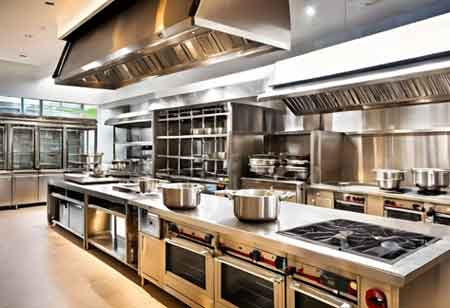Thank you for Subscribing to Food Business Review Weekly Brief
- Home
- Topics
- Alternative Proteins and Plant Based Food
- Beer and Wine
- Canned Beverages
- Coffee And Tea
- Food and Beverage Consulting
- Food and Beverage Financial Service
- Food And Beverages Marketing
- Food Distributors
- Food Ingredients
- Food Sustainability
- Plant Based Food and Beverages
- Seafood Suppliers
- Supplement Manufacturing
- Wine Investment
- News
- Vendor Viewpoint
- CXO Insights
- Conferences
- Newsletter
- CXO Awards
-
The Smart Revolution in Latin America's Commercial Kitchens
Latin America's culinary scene is evolving, with advanced foodservice equipment enhancing protein preparation, addressing labor challenges, ensuring food safety, and promoting sustainability, while meeting the rising demands of consumers.

By
Food Business Review | Friday, June 27, 2025
Stay ahead of the industry with exclusive feature stories on the top companies, expert insights and the latest news delivered straight to your inbox. Subscribe today.

Fremont, CA: Latin America, a region renowned for its culinary traditions and diverse protein-rich diets, is currently undergoing a significant transformation in its commercial kitchens. As demand for quality, efficiency, and sustainability grows, advanced foodservice equipment is emerging as a critical factor in optimizing protein preparation, from small family-run eateries to large-scale industrial operations. This technological embrace is addressing long-standing challenges and unlocking new opportunities across the continent.
The Evolving Landscape of Protein in Latin America
Protein remains a fundamental component of Latin American cuisine, with beef, poultry, pork, and seafood occupying central roles in traditional dishes. However, the conventional methods of preparing these proteins often demand substantial manual labor and time, leading to inconsistencies in product quality and food safety. In parallel, shifting consumer expectations—driven by increasing awareness of health, sustainability, and interest in diverse protein sources such as plant-based alternatives—are accelerating the need for innovation within the industry.
Commercial kitchens across Latin America are navigating a complex set of operational challenges. Labor costs and availability, while variable across regions, are increasingly impacted by rising wages and the demand for greater efficiency, underscoring the need for automation. Food safety and hygiene remain critical, particularly when handling raw proteins, with regional regulations—though becoming more harmonized—necessitating robust and adaptable safety protocols. Consistency in product quality, both across batches and locations, is another pressing concern that traditional preparation methods often fail to address effectively. Energy and water-intensive cooking practices raise both environmental and economic issues, further complicating operations. The imperative to reduce food waste—especially when dealing with high-cost protein ingredients—reflects not only financial pressures but also growing ethical and sustainability considerations.
The Power of Innovation: Advanced Equipment at Work
One of the most significant advancements lies in precision cooking and temperature control. Combi ovens, which combine steam and convection heat, offer precise management of both temperature and humidity. This results in consistently cooked proteins that retain moisture, exhibit tender textures, and reduce shrinkage, ultimately improving yield. Similarly, sous vide technology—using low-temperature, long-time cooking—ensures unmatched tenderness and uniformity, while minimizing nutrient loss and enabling efficient batch preparation.
Automation also plays a critical role in improving productivity and consistency. Automated slicers and portioning machines deliver precise cuts, reduce waste, and increase throughput, which is especially beneficial for high-volume operations handling premium meat or fish. Industrial mixers and grinders further streamline the preparation of ground meats, sausages, and marinades by handling larger volumes with greater efficiency and hygiene. Vacuum sealers enhance both shelf life and preparation efficiency, particularly by accelerating the marination process and ensuring deeper flavor penetration.
Food safety and hygiene are embedded into the design of modern equipment. Many units are built with hygienic design principles, featuring smooth surfaces, minimal crevices, and components that are easy to disassemble for thorough cleaning. This significantly reduces the risk of cross-contamination—an essential consideration when handling raw proteins.
Governments and industry associations are playing a role in promoting these advancements through training programs, financial incentives, and the enforcement of stricter food safety regulations. As the Latin American culinary scene continues to evolve and global standards become more prevalent, the integration of cutting-edge equipment will not just be an advantage but a necessity. The future of commercial protein preparation in Latin America is undeniably intertwined with technology, promising a more efficient, safe, and delicious future for the region's diverse gastronomic landscape.






